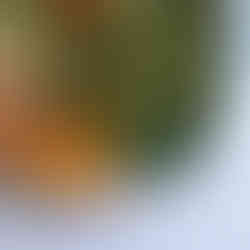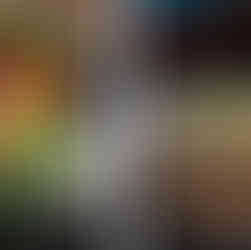Getting started with food photography
- Harrietbaileyphoto

- Jul 19, 2018
- 4 min read
Updated: Feb 23, 2020

Hey! So this is is a basic introduction to food photography containing some hints and tips of what you should be paying attention too. I'm not saying that my way of doing things is the absolute tried and tested best way possible I'm just saying this is how I work and it seems to work well for me! So here I have outlined some key steps that I find really helpful and will help you improve your own food photography or even just get started!
PLAN & RESEARCH
First of all you need to think about what it is that you are shooting. What style are you aiming for and what would suit the food best? Doing some research online to find out what style of photography you are drawn towards can help to inspire and focus your chosen style for the shoot. If you're aiming for a bright and airy shot with soft lighting and shadows and flattering light for the food then one technique is to shoot with daylight. You want to find a bright spot by a window that is well lit but not in direct sunlight. Look at the way light falls on to the surface, you want that light to be soft and creating gentle shadows.
If you want to be achieving more of a punchy image with stronger highlights and darker shadows, or you want consistency over several shoots the best method is to use studio lighting. This allows you to be able to completely control the lighting yourself and have a high-level of consistency. For hints and tips when it comes to studio lighting watch out for my blog post: 'Studio lighting for food photography'.
THE SET UP
Once you have decided your method of shooting whether that is with daylight or studio lights, you will need to decide what surface you want to have the food on and what background you want if it is going to be in view. The surface and background does not have to be expensive, it can be an old table top, a large tile, a painted piece of cardboard or wood etc. If you want any extra inspiration and advice on making backgrounds for food photography check out the blog post 'Making and finding Food Photography backgrounds' coming soon. Remember to think about the colour scheme and the overall look and feel you're going for when selecting your surface and background.
PROPS
Think logically about what food you are photographing: what utensils will be needed to eat or make the food, what ingredients and processes are used, would any of them work to create some interest around the food within the frame. Are you aiming to tell a story about the food within the frame or is the aim to keep it minimalistic and keep the focus on the main dish itself. Linens and pieces of soft cloth can work nicely to add a homely feel to a food photograph, or add a little bit of context. It is good to have a couple of utensils that photograph well for use for food photoshoots, but I generally find that less is more! Look out for the blog post 'Hints and Tips for styling Food Photoshoots'. I try to avoid using fresh ingredients unless the food I'm photographing is in the process of being made and not the finished product. But that is personal preference for me, at the end of the day this is your photograph and your artwork, experiment as much as you like! Go crazy with lots of different props and ideas until you find a style that suits you. You might want to include plants, peoples hands, other plates, crumbs etc.
THE FOOD ITSELF
You want to make sure that the food itself looks professional, that it looks good enough to eat already, make sure that there are no marks or splashes or grease on the crockery. If it is hot food that will melt or change shape quickly make sure you have set the shot up completely by using a stand in object that is roughly the same height or size. Then bring in the food at the last minute so you can ensure that you are shooting the final shots whilst the food still looks fresh and appetising to the viewer.
COMPOSING THE SHOT
Once you have the shot set up and you are ready to shoot, now it is about tweaking that composition so it all compliments the food. Pay attention to leading lines throughout the frame, you want to draw the viewers eye in towards the food. Pay attention to making sure that your props are not distracting from the food itself - it should be complimenting it, not drawing attention away.
FINE TUNING THE LIGHTING
If there are areas where you do not have enough highlights you can use a reflector to reflect light back into those areas. Make sure that you have enough light on the main dish and the the lighting is even throughout the shot. Once you are happy with your shots it is time to upload and edit to your preferred look! For an example of how I personally edit my work watch out for the blog post on editing coming soon!
I hope this has helped to inspire you to give food photography a go, Remember there are no rules, just get creative.
Stay tuned and subscribe for more advice and tips on food, drink and interior photography.

































Comments